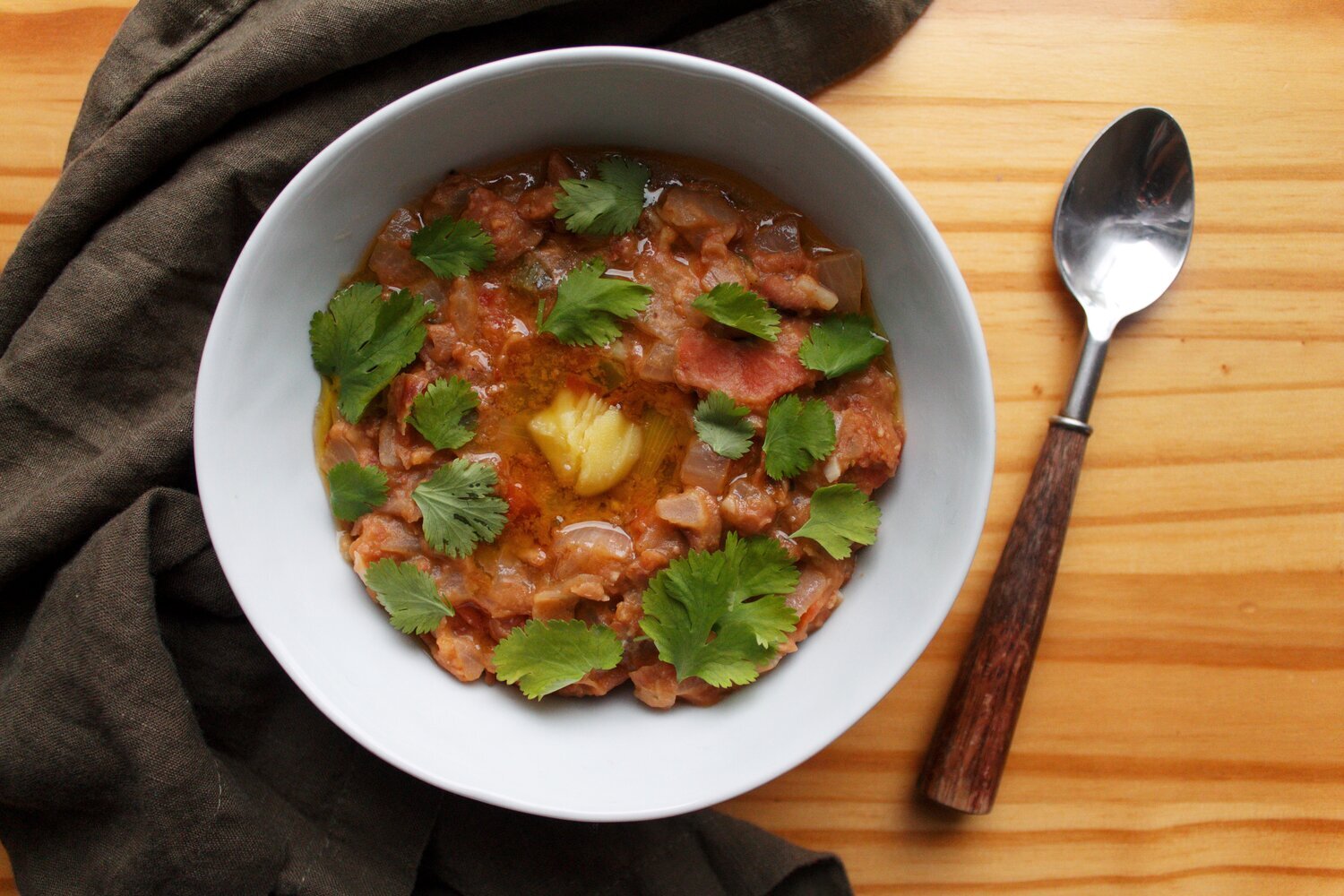To Eat At Someone Else's Table: Sukaina's Yemeni-style Foul
To Eat at Someone Else’s Table is a privilege. It’s a deep dive into history. It’s a slice of someone’s life. It’s an opportunity to get to know someone on a more intimate level. It’s eye opening. It’s a connector. And it’s delicious.
To Eat at Someone Else’s Table is an interview series that explores culinary home cooking traditions from around the world. Each month, we will get to know a new home cook and share a meal with them. We’ll deep dive into the meal itself, its origins, its significance to our guests’ lives, and learn more about our guests’ passion for cooking.
The original intention of this series was to be conducted in person, actually cook and sharing this dish together. I could’ve waited until life resumed to a new normal where social distancing guidelines were lifted, but felt that now was even more of a crucial time to start the series as a way to stay connected to my friends and peers in the culinary space. While these meals won’t be shared in person, I’m hopeful the recorded conversations and recipes will provide a sense of continued closeness for everyone reading.
For this series, there’s a specific focus on female cooks because we are not only under-represented in the professional culinary world, but we are also underestimated in our home kitchens. There are so many talented female home cooks that should be celebrated and recognized for their talents, and I’m humbled to be able to spotlight them through this interview series.
I’m excited to share with you my first guest of To Eat at Someone Else’s Table - Sukaina Al Shami, author of the food blog kikitwithkiki. Read her interview and find her recipe for Yemeni style Foul below!
Interview with Sukaina Al Shami
Tell us about yourself!
“I was born in Yemen and grew up in Yemen, Lebanon and the U.S. I believe the most influential event in my life was my dad’s devastating death. Not only did we have to deal with the pain of losing him, we ultimately lost everything and had to start from zero. I have 6 siblings but my two sisters and I had to be independent with my mom. Although we were working and studying full time, the silver lining of those circumstance, just like now, there is always a silver lining, was that I got to spend time with my mom and learn so much from her on authentic Yemeni food. I’m lucky to have access to her knowledge and expertise. Being raised in the U.S. I am interested in modernizing and simplifying Yemeni cuisine to the table of young people who are interested in trying new cuisines!”
Tell us about this dish. What is it & where do its origins lay?
“Yemeni Ful is made of ful medames which are fava beans and cooked much like a stew. It’s a staple in the Middle Eastern region, dating thousands of years back. What makes this dish versatile is how each country has made it its own. In Yemen, Yemeni ful is traditionally made with a commonly used base of Yemeni kushn - onions, garlic and tomatoes that simmer together before adding the main ingredient - in this case Ful. In addition to the cumin it’s the mix of spices that we add, and the special ingredient:ghee that make Yemeni ful - Yemeni ful.”
Do you have a special memory associated with this dish? Why is this dish special to you?
“I grew up having Ful in Yemen and the United States and it was constantly made for breakfast and every time I have it, it never disappoints. It’s flavorful, consistent and satisfying.”
What inspires you to cook and/or bake?
“My mother, her passion for Yemeni food that I grew up watching. I inherited that passion. I realized I had much in common with her and that is when you put in love, and genuine effort in the food you are making then it will always taste like it was made with passion and care. With its rich, and authentic flavors and ingredients that’s what Yemeni food inspires me to do.”
What’s your favorite spice to cook with and why?
“If I had to choose one it would be cumin. Cumin is the main spice used in the majority of traditional Yemeni recipes. It’s powerful, earthy, balanced, and it adds that unique touch that savory dishes often long for.”
Do you have anyone you look up to in the culinary world?
“I do not actually. The only person that I’ve looked up to was my mother. In my eyes, she will always be the most inspiring chef to me.”
Why are you passionate about cooking?
“I believe that food brings us to together and allows us to have unforgettable experiences and memories. We often times remember how certain dishes tasted and how they made us feel. We remember who we were with and what it is we were doing by revisiting those flavors and meals - taking is back to those journeys. To me that is a heart warming and genuine human sentiment and connection that cannot be broken, but if anything, it can only be further enhanced with passion.”
Yemeni Foul
Ingredients:
1 can Foul (fava beans)
1 onion, diced
1 jalapeno, diced
1 large tomato, diced
3 cloves garlic, minced
1/2 cup water
2 tablespoons olive oil
1 tablespoon ghee
1 teaspoon cumin
1/2 teaspoon coriander
1 teaspoon salt
1 teaspoon pepper
1 teaspoon oregano
cilantro for garnish (optional)
Directions:
On medium-high heat, saute diced onions and garlic with olive oil in a medium pot until they are soft and caramelized.
Once caramelized, push the onions and garlic to one side of the pot, add in the spices & let them melt into the oil.
Add in the diced tomatoes, jalapeno & some chopped cilantro & let cook until tender.
Drain Foul (fava beans) & add them to the pot. Let them cook for a few minutes.
Add in 1/2 cup water & allow to cook for a few minutes.
Mash the beans with a potato masher or use a hand blender.
For serving, top with a tablespoon of ghee & garnish with fresh cilantro.


